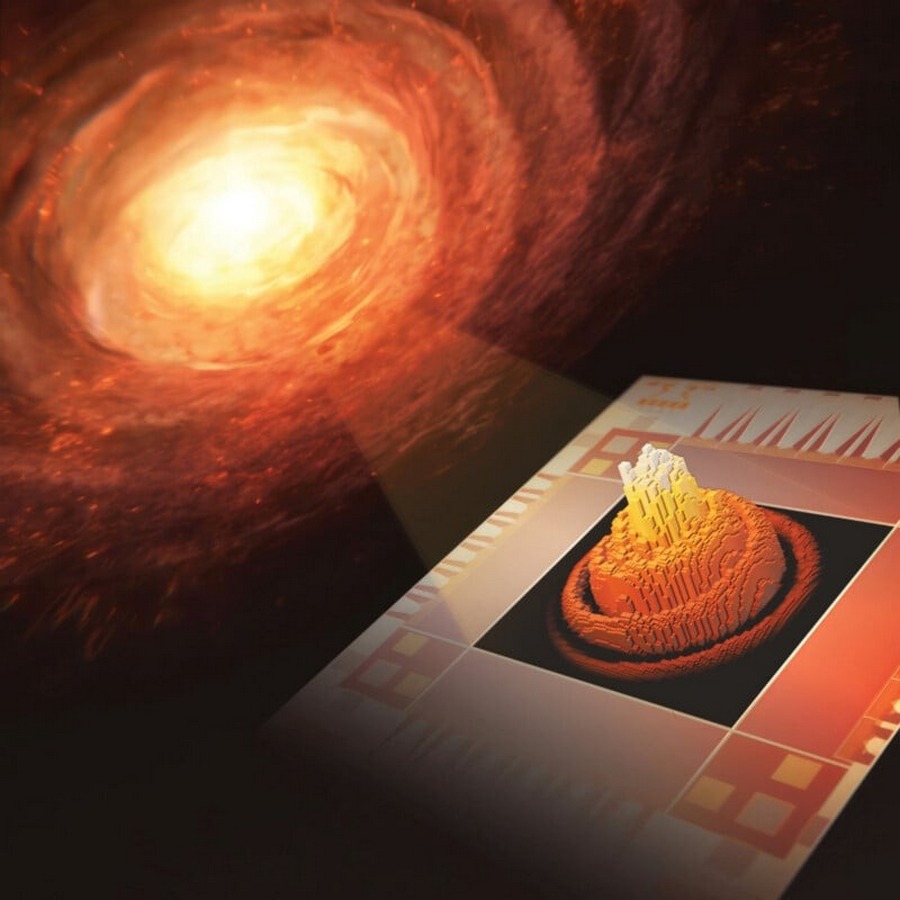Scientists from the National Institute of Standards and Technology (NIST), which is part of the United States Department of Commerce, presented to the world a new breakthrough in the field of photonics: a single-photon superconducting camera with the highest resolution in the world. This innovative development can open up many possibilities for a wide range of applications.
Ultra-sensitive cameras are widely used in various fields, ranging from biomedical research to astronomical observations. They give the ability to detect extremely weak light signals, even from distant objects in space or from parts of the human brain. The key feature of this new superconducting camera is its extremely high resolution, which exceeds any previous analogues.
The NIST superconducting camera consists of 400 thousand pixels, which is 400 times more than similar cameras. Its design includes thin superconducting wires cooled to almost absolute zero. The current in such wires moves without resistance until a photon falls on them.
Super-complex task of creating
However, the development of high-resolution superconducting cameras proved to be a very hard task. The first superconducting cameras capable of detecting individual photons were developed more than 20 years ago, but they contained only a few thousand pixels, which limited their use.
One of the key challenges was to create a superconducting camera with numerous pixels, since each of them must be cooled for proper operation. A team of scientists from NIST and other institutes has developed a new approach to this problem. They have developed a way to combine signals from many pixels on multiple wires for reading at room temperature.

The new design of the NIST camera is striking in its complexity. It includes two grids of electrical wires that overlap each other, creating “pixels” at their intersections. When a photon strikes and warms a wire, it disrupts the current in the wire, creating a resistive hotspot that diverts current and supplies voltage to the camera detector in two directions. This allows determining the exact position of the photon on the camera screen.
The detectors of this camera can distinguish the arrival time of photons with an accuracy of 50 trillionths of a second and can register up to 100 thousand photons per second. Such high resolution and accuracy open up many opportunities for scientific research, from astronomy and biology to quantum computing and biomedicine.
Camera capabilities for science
In addition, the new readout structure is highly scalable, which means that NIST can develop even larger cameras with even higher resolution. Now the team of scientists plans to improve the sensitivity of the prototype camera so that it can detect almost every incoming photon. This will open up new opportunities for low-light research, including imaging of faint galaxies and planets outside the solar system, light measurements in photon-based quantum computers, and biomedical research that uses near-infrared light to study human tissues.
Earlier we reported on how MRO spotted the Chinese Zhurong spacecraft on the surface of Mars.
According to petapixel.com
Follow us on Twitter to get the most interesting space news in time
https://twitter.com/ust_magazine

